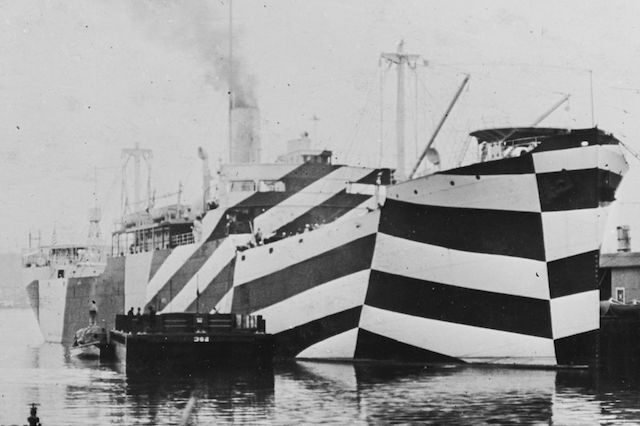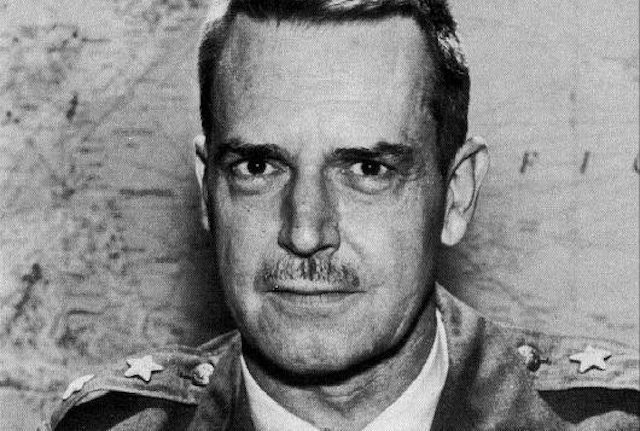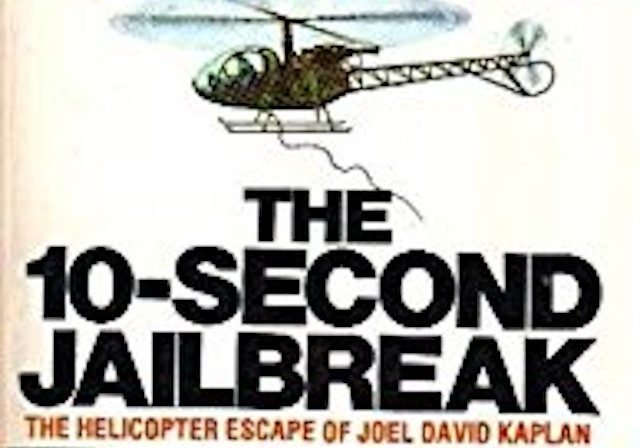It’s a staple of cheesy action movies and TV shows—a harebrained solution that is so outlandish the protagonists just might pull it off. “It’s just crazy enough to work,” they always say. However, plans that seem wildly implausible, but somehow manage to succeed, don’t only exist in the world of fiction. Below are 10 real-life crazy schemes, plans, and ideas that really were just wacky enough to work…
10: Sweeping up the cash
A group of French thieves found an enterprising way to clean out a chain of French supermarkets… literally. Due to the nature of their business, supermarkets tend to have a significant amount of cash on hand and grocery store security protocols tend to be less stringent than other cash-heavy facilities like, for example, banks. However, the larger supermarkets (those with a lot of money sitting around) still aren’t easy targets for thieves. Generally, these stores employ some sort of vault to safeguard their cash until it can be picked up and taken to the bank, and for most thieves, breaking into a vault or safe quickly is still a rather difficult feat.
Enter the “vacuum gang,” French thieves who figured out a novel way to rob cash from Monoprix grocery stores on more than a dozen occasions—with a total haul of hundreds of thousands of Euros. Rather than breaking into the vault, the thieves targeted the pneumatic tube system that delivered envelopes of money from cashiers to the store’s vault. By drilling a hole in the tube and then using a powerful vacuum, the thieves were able to sweep up the cash before it ever reached the vault, and to escape without being caught or identified.
9: Disguising embassy personnel as a film crew to sneak them out of hostile territory
This next plan is so crazy that it sounds like the plot of a movie and, in fact, the movie Argo is based on the true story of how the CIA, aided tremendously by the Canadian government, snuck 6 American consular officials out of Iran after the US Embassy in Tehran was stormed.
On November 4, 1979, the US Embassy in Tehran was overrun by militant protestors. While more than 50 Americans working at the embassy were captured and held for more a year during the infamous Iranian hostage crisis, 5 Americans working at the embassy, and one working nearby as an attaché, were able to escape without being detected. After a few days of moving from house to house, the group turned to the Canadian embassy for help. The Canadians gave them shelter at the embassy and the ambassador’s personal residence while the CIA developed a plan to try to get the 6 out of Iran.
There were a lot of reasons to doubt that a safe exit from Iran would be possible for the Americans. The Iranians were employing carpet weavers to try to reconstruct files that contained photos of embassy staff members, so they might discover that some consular personnel were missing from their group of hostages at any time. Plausible cover stories for the group—that they were English teachers, that they were working for an NGO, or that they were agricultural inspectors—were unworkable. English language schools had all been shuttered, the Iranian government carefully monitored foreign NGO personnel, and crop inspections wouldn’t occur during winter.
So the CIA, specifically Tony Mendez, who was the authentication chief of the CIA’s Graphics and Authentication division, hatched an audacious plan to convince the Iranians the group was a Canadian film crew, scouting locations for Argo, a sci-fi movie set in outer space. The plan required the CIA to set up a movie production office in LA (which they did, even taking meetings on other potential future projects), generate publicity around the film’s production (Hollywood Reporter and Variety published articles around the plans for the film), and obtain Canadian passports that backed up their supposed plan (Canadian law forbids falsification of identity documents but Canadian parliament met in secret to approve the first exception since WWII). In addition to procuring passports, the Canadians got copies of visa documents, established patterns of transit through the airport in Tehran, bought airline tickets and coached the group in how to sound Canadian.
Amazingly, this convoluted plan worked. The Iranian airport officials were fooled. The 6 Americans boarded the Swissair plane that would take them out of danger and, once the plane left Iranian airspace, celebrated the success of their improbable path to escape with Bloody Marys.
8: Figuring out how to beat Press Your Luck
Many folks have dreamed of winning big on a game show. Michael Larson was one of them. However, unlike most people, Larson developed and executed a strategy that allowed him to rack up more than $110,000 in winnings on a single episode of Press Your Luck, which at the time (1984) was the largest haul by any daytime game show contestant in history.
How did Larson beat Press Your Luck? To understand his victory, you need to understand a little about how the game worked. Contestants answered questions and were awarded spins around a board of illuminated squares that offered cash, prizes, additional spins and “Whammies.” Land on a Whammy (which were placed on 1/6th of the rotating squares) and you would lose all your accumulated cash and prizes and end your turn. The team that built the board believed that the speed and random nature of the board would prevent any contestant from accruing more than $25,000; most winners left with about $14,000.
However, Larson, who had long been drawn to get-rich-quick schemes, had a lot of time on his hands to analyze episodes of Press Your Luck. After months of viewing the show during the winter (he was an ice cream man who didn’t work in the off season), Larson figured out the game’s secret flaw: the squares weren’t actually randomized. Instead, there were 5 looping patterns which, with the help of a VCR and practice with his remote, he memorized. Larson then spent the last of his savings on a ticket to LA, where he successfully auditioned for the show. During the first half of the show, Larson didn’t do well (perhaps on purpose), but during the second half he found his footing. Larson spun 45 times in a row without hitting a Whammy, passing his remaining spins when he feared he was losing focus.
While show executives panicked about his improbable winning streak, they were helpless to stop it. Even after the show, they determined that he was entitled to his winnings, because he had not broken any of the shows rules, just exploited a glitch in the board that no one else had noticed. Immediately after this episode, the board was retooled and contestant winnings were capped at $75,000, stopping any other players from taking the luck out of Press Your Luck.
7: Dazzling the enemy

It sounds like the exact opposite of how you would camouflage a military ship—by covering it with striking geometric patterns in bold, contrasting colors. But this dazzle camouflage was used by the British and then by the US to protect their ships, primarily during WWI. The idea behind dazzle painting, proposed by British artist Norman Wilkinson, was to confuse German U-boat gunners by using the patterns to make it hard to quickly determine the ship’s size, speed, or direction. Because torpedoes were slow and expensive, a gunner generally only had one shot to hit his target, and an optical illusion that made him even slightly less precise could offer significant advantages to the target ship.
During WWI, more than 4,000 British ships and 1,200 American ships were dazzled. The jury is still out on whether dazzle painting was effective at thwarting enemy attacks. Academic studies at the time suggested that the designs could distort course estimates enough to elude torpedo attacks and there is some evidence suggesting that dazzled boats may have been struck more often, but less effectively, by the enemy during the war. Insurance companies believed it worked, lowering premiums for merchant vessels that had been dazzled. The British Admiralty concluded that dazzling probably didn’t hurt or help, but noted that the improved morale on dazzled ships versus nondazzled ships was reason enough to keep the painting, though ships were mostly painted over in more traditional grey when the war ended.
6: Using a nonexistent currency to bring inflation under control in Brazil

From the 1950s onward, the Brazilian economy went through an inflationary period that caused turmoil within the country. By 1993, inflation had reached an incredible 2,000% a year. Brazilians would frantically rush to fill their fridges with food and their cars with gas as soon as they were paid, because prices would invariably be higher the next day, and the day after that. Successive governments had failed to get inflation under control and the Brazilian people lost faith not only in their government, but also in their currency.
Finally, a new finance minister called an economist for advice on how to rein in inflation. The economist, Edmar Bacha, and three of his longtime buddies from grad school proposed a plan that initially sounded crazy. In addition to reining in government spending, they wanted to introduce a fake currency, which they called the URV—Unit of Real Value. The old currency, the cruzeiro, would continue to exist, but all wages and prices would be listed in URVs. The only thing that would fluctuate is how many cruzeiros a URV was worth.
Even though there were no physical URVs, over the next few months Brazilians came to trust that URV prices would remain steady. At that point, this virtual currency became an actual currency, known as the real. Inflation fell dramatically and Brazil’s economy became much more stable. As one economist put it, “Brazilians suddenly became capable of making plans for the future instead of having to live in the here and now.”
5: Pretending to be mythical vampires to quell rebellion

From 1942-1954, the Hukbalahap Rebellion, in which former soldiers rose up against the Philippine government, raged throughout the Philippines. The CIA brought in Air Force Colonel Edward Lansdale (pictured above) to help assist the Philippine defense minister in subduing the rebels.
Colonel Lansdale led a campaign focused on psychological warfare, including a plane that broadcast warnings from the “voice of God.” One of Lansdale’s more inventive strategies involved exploiting local superstitions around the Aswang, a terrifying mythical vampire that has been a staple of Filipino folklore for centuries. When a Huk (rebel) camp proved difficult to dislodge through conventional means, Lansdale’s combat Psychological Operations squad was brought in. It began by spreading rumors amongst local villagers of an Aswang sighting. Then, as Lansdale recounts in his book:
“The psywar squad set up an ambush along the trail used by the Huks. When a Huk patrol came along the trail, the ambushers silently snatched the last man of the patrol, their move unseen in the dark night. They punctured his neck with two holes, vampire-fashion, held the body up by the heels, drained it of blood, and put the corpse back on the trail. When the Huks returned to look for the missing man and found their bloodless comrade, every member of the patrol believed that the asuang had got him and that one of them would be next if they remained on that hill. When daylight came, the whole Huk squadron moved out of the vicinity.”
While this is the only reported instance of American operatives impersonating vampires, local superstitions were also used during the Vietnam War, when the US broadcast a recording called “The Wailing Soul,” in which spooky music overlaid a purported conversation between the wandering soul of a dead Vietnamese soldier and his daughter.
4: Escaping from prison… in a helicopter

Joel David Kaplan, a businessman from a wealthy New York family, found himself in a precarious position. Despite substantial irregularities in the evidence (like a body that did not appear to match the description of the deceased) and his trial, he was convicted of killing his business partner and sentenced to 28 years in a Mexican prison. After his appeals were denied, Kaplan, who maintained his innocence throughout, knew that his only chance of getting out was to escape. Several unsuccessful escape plans were attempted—trying to escape en route to the hospital after feigning illness, having a tunnel dug to provide a route out of the prison, sneaking out in disguise, and hiding inside one of the truck compartments that were manufactured onsite at the prison.
In the end, the escape plan that got Kaplan out of prison seemed like the most farfetched scheme of all: Kaplan, along with another prisoner, escaped by helicopter. While most of the prisoners and guards were occupied watching a movie, the chopper touched down in the prison yard, and Kaplan and his fellow prisoner, just ran out, grabbed on, and flew away without even triggering an alarm. The helicopter took them to a nearby plane, on which Kaplan and his pilot flew across the border into Texas and presented themselves to US Customs officials. The best part of the plan: since escaping from jail is not a crime in Mexico and the two men were honest with US Customs about their identities, there were no crimes committed in the eyes of the US government.
US authorities showed little interest in extraditing Kaplan, who was rumored to have been working with the CIA, on the basis of his dubious murder conviction, so after his crazy escape, Kaplan was free to go. Kaplan’s helicopter-aided jailbreak was the first of its kind, but numerous other attempts followed, with mixed success.
3: Using lunar gravity, duct tape, and a sock to get astronauts back to Earth alive
“Houston, we’ve had a problem.” Those iconic words, spoken by astronaut Jim Lovell aboard the Apollo 13 moon mission, marked the beginning of a frantic effort to get the three-man crew aboard the shuttle back to Earth safely after one of the ship’s oxygen tanks exploded and two of the spacecraft’s three fuel cells were lost.
The crew quickly moved to the tiny lunar module to preserve electrical energy, while NASA personnel on the ground devised plans to keep 3 men alive for 4 days in a lunar module that had been designed to support 2 men for 2 days. The most pressing problem was developing a way to remove carbon dioxide from the module. Square canisters of lithium hydroxide could clean the air, but wouldn’t fit into the round openings on the lunar module. Mission control devised a workaround to get the canisters to fit, using materials on board the module, including an instruction book, a piece of a plastic garment bag, a tube sock, and duct tape.
The other key problem was getting the spacecraft back to Earth with the fuel that remained. Mission control directed the astronauts on precise firing of the spacecraft’s engines to use lunar gravity to slingshot around the moon on a return trajectory. On April 17, 1970, the crew returned safely to Earth and a jubilant nation celebrated the ingenuity and tenacity that allowed the astronauts to make it home in one piece.
2: Holding back the sea

It sounds like a recipe for disaster—having one of the world’s most densely populated countries situated largely on a low-lying flood plain right next to the ocean. Oh, and the land is also criss-crossed by rivers. However, despite several serious floods in its history, the Netherlands has largely succeeded in using an elaborate system of canals, dikes, and reservoirs to hold back the sea.
Early Dutch settlers relied on dikes to protect them from the sea and rivers, and then windmills to power drainage ditches and canals to make the land suitable for agriculture and safe for habitation. Today, Dutch flood management has become more sophisticated, incorporating storm surge barriers, such as the Maeslantkering, a set of giant floating doors in the waterway that connects the North Sea to the port city of Rotterdam. If a storm surge of more than 3 meters is anticipated, the doors automatically shut to protect Rotterdam’s harbor and surrounding towns.
The national government has also worked to reclaim fields and canals to serve as reservoirs in the event of a flood, and as usable public space during other times. As Rotterdam’s climate chief explained, for the Dutch, finding strategies to deal with the water that surrounds the country has long been a top priority: “It is not just a bunch of dikes and dams, but a way of life.”
1: Facilitating kidney swaps
Donating an organ to someone who needs it to survive is quite literally giving the gift of life. And it’s a gift many are waiting for; as of 2016, in the US, more than 120,000 people were on the waitlist for an organ transplant, with more than 100,000 of them waiting for a kidney transplant. Unfortunately, there just aren’t enough kidneys for all those who need them. In 2014, only about 17,000 donor kidneys (about 11,500 from deceased donors) were available in the US and more than 8,000 people waiting for a kidney either died or became too sick for a transplant while they waited.
Many patients suffering have friends or family members who are willing to donate a kidney to them, and in the US, about 1/3 of transplanted kidneys come from living donors. But sometimes—about 1/3 of the time – the willing friend or family member isn’t a match. This used to stop the process; the recipient would have to continue waiting for a kidney from a deceased donor, which isn’t ideal, both because of the delays inherent in the waitlist as well as the fact that kidneys from living donors last almost twice as long after transplant.
In 1991, South Korean doctors began solving this problem through a strategy that sounds a little off-the-wall at first: facilitating kidney swaps. Patient A’s loved one (who was not a match with Patient A, but was with Patient B) would donate their kidney to Patient B and Patient B’s loved one (who matched Patient A, but not Patient B) would donate to Patient A. While this was a big step forward, it still left some people out, as a match was needed on both sides. Through a program the National Kidney Registry, participating hospitals in the US sought to address this by using computer matching to create “domino chains” of kidney donations, an even more audacious undertaking. An altruistic donor (unrelated to any recipient) “kicks off” the chain by donating a kidney, and a series of matched donations from loved ones to unrelated recipients ensues, ending with a final recipient who lacks a willing living donor.
In 2012, a chain involving 60 surgeries over 5 months resulted in 30 kidney transplants across the United States. In 2015, an even larger chain resulted in 34 successful kidney transplants, setting a new record. By allowing living donors to trade their kidneys to secure one for a loved one, the domino effect allows more lives to be saved, both by increasing the number of living donors who are able to help a loved one in need, and by reducing the pool of people on the waitlist for a kidney from a deceased donor.
Hi! I am a robot. I just upvoted you! I found similar content that readers might be interested in:
http://www.toptenz.net/10-crazy-plans-actually-worked.php
Downvoting a post can decrease pending rewards and make it less visible. Common reasons:
Submit